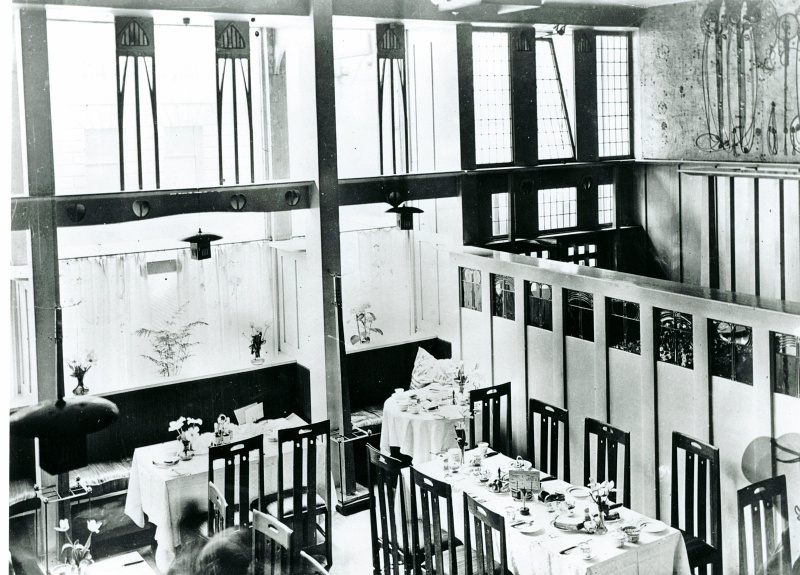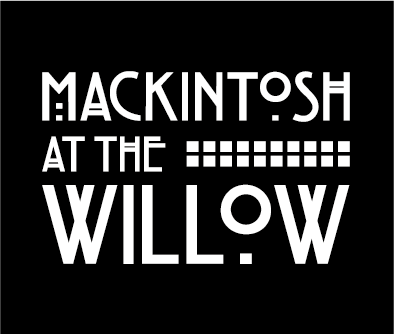
Mackintosh at the Willow, A Wee History – Part 15.
The first tearoom Mackintosh fully designed for Miss Catherine Cranston was the White Dining Room for the Ingram Street Tea Rooms. The interior is white, highlighted with moments of colour. When you first walk in the room you would have been flanked on one side by alternating panels of silver leaf and white, and on your right you would have been flanked by the leaded glass screen.
The screen of the White Dining Room, that subdivides the dining area from the door, represents an alley of willows. These very simply, but expressively, show the life force of the growing tree, very simply rendered through the leaded glass. Once you’re in the room, you would have walked round the screen into the dining area completely surrounded by Mackintosh’s hidden symbolism and motifs.
High above would have been the four and a half metre long gesso panels that he and Margaret made, The May Queen and The Wassail.
This is Mackintosh’s only gesso panel, after this Margaret provides the figurative focal point on his tea rooms.
There is a silver light throughout the room. A lead white painted interior so just a very nice subtly off white colour with silver leaf panels on the east and west walls, the side walls, which basically funnelled light down into the back of the room, from the north facing windows.
Mackintosh’s attention to detail even goes down to the table settings where you have dark stained furniture to contrast against the white of the room, willow-patterned china on the tables and that added with the imagery of the leaded glass trees, and on the mezzanine level a stencilled avenue of large rose bushes, so human height rose bushes. You really would have been out of doors in this tea room and such a contrast to the dirty, smoky city outside. So it really would have been an amazing escape from the city. It is a total work of art.
With thanks to
Alison Brown Kelvingrove Art Gallery and Museum The Hunterian, University of Glasgow

